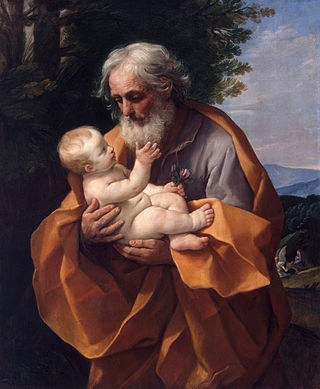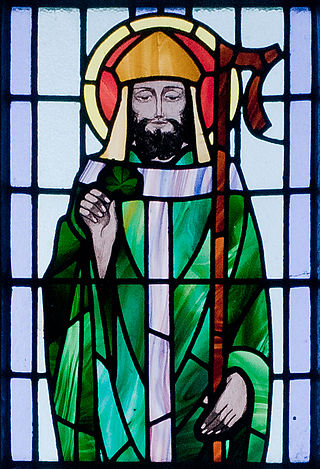February is the second month of the year in the Julian and Gregorian calendars. The month has 28 days in common years or 29 in leap years, with the 29th day being called the leap day. It is the first of five months not to have 31 days and the only one to have fewer than 30 days. February is the third and last month of meteorological winter in the Northern Hemisphere. In the Southern Hemisphere, February is the third and last month of meteorological summer.
A leap year is a calendar year that contains an additional day compared to a common year. The 366th day is added to keep the calendar year synchronised with the astronomical year or seasonal year. Since astronomical events and seasons do not repeat in a whole number of days, calendars having a constant number of days each year will unavoidably drift over time with respect to the event that the year is supposed to track, such as seasons. By inserting ("intercalating") an additional day—a leap day—or month—a leap month—into some years, the drift between a civilization's dating system and the physical properties of the Solar System can be corrected.
The International Fixed Calendar is a proposed calendar reform designed by Moses B. Cotsworth, first presented in 1902. The International Fixed Calendar divides the year into 13 months of 28 days each. A type of perennial calendar, every date is fixed to the same weekday every year. Though it was never officially adopted at the country level, the entrepreneur George Eastman instituted its use at the Eastman Kodak Company in 1928, where it was used until 1989. While it is sometimes described as the 13-month calendar or the equal-month calendar, various alternative calendar designs share these features.

Palm Sunday is the Christian moveable feast that falls on the Sunday before Easter. The feast commemorates Christ's triumphal entry into Jerusalem, an event mentioned in each of the four canonical Gospels. Its name originates from the palm branches waved by the crowd to greet and honor Jesus as he entered the city. Palm Sunday marks the first day of Holy Week; in Western Christianity, this is the beginning of the last week of the solemn season of Lent, preceding Eastertide, while in Eastern Christianity, Holy Week commences after the conclusion of Great Lent.

Saint Joseph's Day, also called the Feast of Saint Joseph or the Solemnity of Saint Joseph, is in Western Christianity the principal feast day of Saint Joseph, husband of the Virgin Mary and legal father of Jesus Christ, celebrated on 19 March. It has the rank of a solemnity in the Catholic Church. It is a feast or commemoration in the provinces of the Anglican Communion, and a feast or festival in the Lutheran Church. Saint Joseph's Day is the Patronal Feast day for Poland as well as for Canada, persons named Joseph, Josephine, etc., for religious institutes, schools and parishes bearing his name, and for carpenters. It is also Father's Day in some Catholic countries, mainly Spain, Portugal, and Italy. It is not a holy day of obligation for Catholics in the United States.

Shrove Tuesday is the final day of Shrovetide, marking the end of pre-Lent. Lent begins the following day with Ash Wednesday. Shrove Tuesday is observed in many Christian countries through participating in confession; the ritual burning of the previous year's Holy Week palms; finalizing one's Lenten sacrifice; as well as eating pancakes and other sweets.

Saint Patrick's Day, or the Feast of Saint Patrick, is a religious and cultural holiday held on 17 March, the traditional death date of Saint Patrick, the foremost patron saint of Ireland.

Ash Wednesday is a holy day of prayer and fasting in many Western Christian denominations. It is preceded by Shrove Tuesday and marks the first day of Lent, the six weeks of penitence before Easter.

Saint Brigid of Kildare or Saint Brigid of Ireland is the patroness saint of Ireland, and one of its three national saints along with Patrick and Columba. According to medieval Irish hagiographies, she was an abbess who founded the important abbey of Kildare, as well as several other convents of nuns. There are few historical facts about her, and her hagiographies are mainly anecdotes and miracle tales, some of which are rooted in pagan folklore. They say Brigid was the daughter of a chieftain and a slave woman, and was raised in a druid's household before becoming a consecrated virgin. She is patroness of many things, including poetry, learning, healing, protection, blacksmithing, livestock and dairy production. In her honour, a perpetual fire was kept burning at Kildare for centuries.

Sadie Hawkins Day is an American folk event and pseudo-holiday originated by Al Capp's hillbilly comic strip Li'l Abner (1934–1977). The annual comic strip storyline inspired real-world Sadie Hawkins events, the premise of which is that women ask men for a date or dancing. "Sadie Hawkins Day" was introduced in the comic strip on November 15, 1937; the storyline ran until the beginning of December. The storyline was revisited the following October/November, and inspired a fad on college campuses. By 1939, Life reported that 201 colleges in 188 cities held a Sadie Hawkins Day event.

Spinster is a term referring to an unmarried woman who is older than what is perceived as the prime age range during which women usually marry. It can also indicate that a woman is considered unlikely to ever marry. The term originally denoted a woman whose occupation was to spin. A synonymous term is old maid. The closest equivalent term for males is "bachelor" or "confirmed bachelor", but this generally does not carry the same connotations in reference to age and perceived desirability in marriage.
In legal definitions for interpersonal status, a single person refers to a person who is not in committed relationships, or is not part of a civil union. In common usage, the term single is often used to refer to someone who is not involved in either any type of sexual relationship, romantic relationship, including long-term dating, engagement, marriage, or someone who is "single by choice". Single people may participate in dating and other activities to find a long-term partner or spouse.
A pattern in Irish Roman Catholicism refers to the devotions that take place within a parish on the feast day of the patron saint of the parish, on that date, called a Pattern day, or the nearest Sunday, called Pattern Sunday. In the case of a local folk saint from Celtic Christianity, there may be archaeological remains traditionally associated with the saint, such as holy wells reputed to have healing powers. Often the parish priest will say Mass or lead prayers at such a site, sometimes processing between several locations. In some parishes, Pattern Sunday coincides with Cemetery Sunday, an annual ancestor veneration observance held in cemeteries which typically includes the cleaning and decoration of family graves as well as religious rituals.

All Saints' Day, also known as All Hallows' Day, the Feast of All Saints, the Feast of All Hallows, the Solemnity of All Saints, and Hallowmas, is a Christian solemnity celebrated in honour of all the saints of the Church, whether they are known or unknown.

A marriage proposal is a custom or ritual, common in Western cultures, in which one member of a couple asks the other for their hand in marriage. If accepted, it marks the initiation of engagement, a mutual promise of later marriage.

Malanka is a Ukrainian folk holiday celebrated on 13 January, which is New Year's Eve in accordance with the 31 December of Julian calendar. The festivities were historically centred around house-to-house visiting by groups of young men, costumed as characters from a folk tale of pre-Christian origin, as well as special food and drink. The context of the rituals has changed, but some elements continue to the present.
In Chinese tradition, a Ghost Marriage is a marriage in which one or both parties are deceased. In mainland China, the practice of Ghost Marriage involves two deceased individuals. In Taiwan and South East Asia, this practice involves with one deceased and one living.

Lent is the solemn Christian religious observance in the liturgical year commemorating the 40 days Jesus Christ spent fasting in the desert and enduring temptation by Satan, according to the Gospels of Matthew, Mark and Luke, before beginning his public ministry. Lent is usually observed in the Catholic, Lutheran, Moravian, Anglican, United Protestant and Orthodox Christian traditions, among others. Some Anabaptist, Baptist, Methodist, Reformed, and nondenominational Christian churches also observe Lent, although many churches in these traditions do not.

Carnival in French Guiana is a major event. Its style is described as Afro-Caribbean. A moveable holiday, it takes place between Epiphany and Ash Wednesday, ending on Mardi Gras. Known internationally for its Paré-masqué balls and its emblematic character, the Touloulou, it is considered the longest carnival in the world.

Slavic carnivals are known under different names in various Slavic countries: Bulgarian: Сирни заговезни, Прошка, Поклади, romanized: Sirni zagovezni, Proshka, Pokladi; Macedonian: Прочка, romanized: Pročka; Russian: Масленица, Мясопуст, romanized: Maslenitsa, Myasopust; Polish: Ostatki, Mięsopust, Zapusty; Czech: Masopust, Šibřinky, Ostatky; Slovak: Fašiangy; Slovene: Mesopȗst, Pust, Pustni teden, Fašnk; Serbian: Покладе, Проћка / Poklade, Proćka; Croatian: Pust, Poklade, Mesopust, Fašnik. They are traditional Slavic festivals related to the period of carnival.














